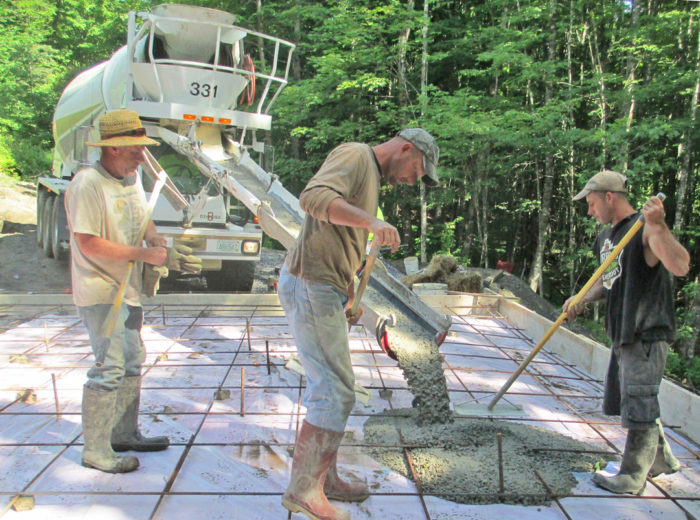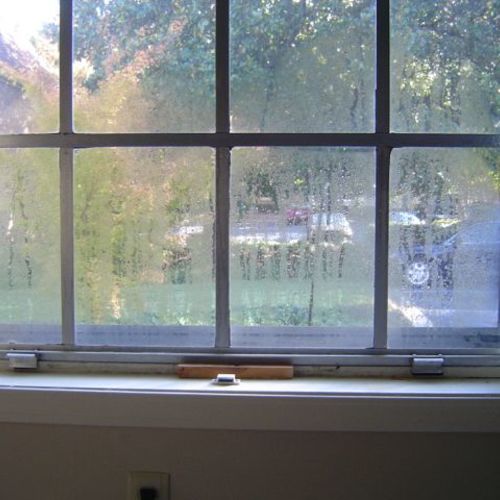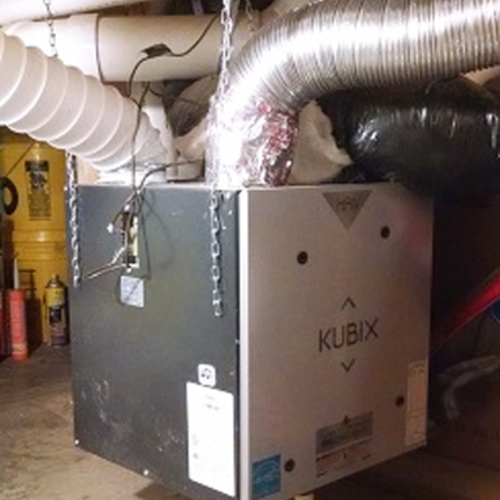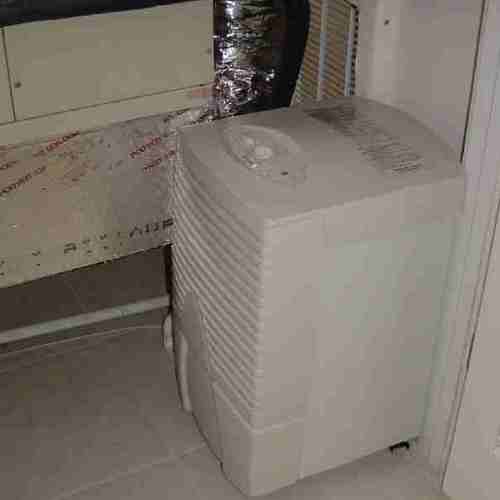
Image Credit: Martin Holladay
If it is designed well, the thermal envelope of your home should control the flow of heat, air, and moisture. Unfortunately, the floors, walls, and ceilings of older buildings are often leaky: they leak heat, they leak air, and they leak moisture.
If you are building a new house, you have the opportunity to control the flow of heat, air, and moisture through your home’s building envelope. The result will be a durable, comfortable building that doesn’t cost much to heat and cool.
Of course, we use insulation to control the flow of heat and we use air barriers to control the flow of air. In almost all cases, it’s a good idea to limit the flow of heat and air through a home’s thermal envelope.
Controlling the flow of moisture is a little more complicated than controlling the flow of heat and air, however.
When your indoor air is too humid…
There are lots of ways that moisture can cause problems in a home — almost too many to list. Moisture entry can cause basement puddles, sheathing rot, and drywall mold. Because the list of problems is so long, I’m going to limit the focus of this article to just one issue: indoor air with elevated relative humidity (RH).
Signs that the RH of your indoor air is too high include mold, condensation on windows, and clammy-feeling air. If you’re not sure whether your indoor air is too humid, you can measure RH with a hygrometer. In general, indoor RH above 40% in winter or above 60% in summer is considered high.
The moisture that causes elevated indoor RH might be generated indoors — for example, it might come from a plumbing leak — or it might be…
Weekly Newsletter
Get building science and energy efficiency advice, plus special offers, in your inbox.

This article is only available to GBA Prime Members
Sign up for a free trial and get instant access to this article as well as GBA’s complete library of premium articles and construction details.
Start Free TrialAlready a member? Log in















10 Comments
Indoor Relative Humidity Limit
Martin - Thanks for another clear, informative article. This one triggered a question that I've had for some time. Why is 60% an acceptable indoor relative humidity limit in the summer, but not in the winter? Intuitively, it seems that if the indoor temperature remains relatively consistent throughout the year, the acceptable indoor relative humidity limit should not change.
Response to Jerome Lisuzzo
Jerome,
There are several reasons:
1. Lowering the indoor RH to 40% during the summer would be very energy-intensive in humid climates (for example, in the U.S. east of the Rocky Mountains). In the summer, 60% is usually achievable; 40%, not so much.
2. While 60% indoor RH would cause condensation problems on windows during the winter, 60% indoor RH doesn't cause the same problem during the summer.
There are more reasons, I'm sure. Readers: chime in with your reasons.
Why not 60% in winter?
Jerome, that's a great question and Martin gave a good answer. I'll just add a little bit and say that you want lower indoor RH in winter because there are a lot more colder surfaces available in winter that could become condensing surfaces if that humid air comes into contact with them. Martin mentioned windows, but it can happen inside walls, on ceilings, or other places.
I wrote about Building Science Corporation's study on double-stud walls last year, and Kohta Ueno, the author told me, "I have *very* seldom seen houses running 40% RH through the entire winter around here." Most homes, he said, run at about 20-30% RH through the winter, and he considers 40-50% RH to be "crazy-dangerous levels in a New England/Zone 5 type of climate."
Here's that article:
Is Cold Sheathing in Double-Wall Construction at Risk?
http://www.greenbuildingadvisor.com/articles/dept/building-science/cold-sheathing-double-wall-construction-risk
Another side of this is that unless you're generating a lot of water vapor indoors, it'll probably be hard to get to 60% RH in the winter in a mixed or cold climate. There's not a lot of water vapor in cold outdoor air, so when it comes into a house through infiltration or ventilation, you end up with lower RH. Cold air is dry air. (www.energyvanguard.com/blog-building-science-HERS-BPI/bid/72820/Cold-Air-Is-Dry-Air)
Indoor Relative Humidity
Thanks, guys! Another mystery (of mine) solved. And Allison, thanks for the articles. The second one, in particular, helped me sort out another mystery; this one about how to reconcile the outdoor RH (which often reads at 90+ percent on winter mornings) with our indoor humidity, which seems much lower (according to our hydrometer), but could actually still be higher in absolute terms. (Hopefully I've got it right!)
Summer Condensation
Great article Martin. Almost all conversation about condensation is during winter and cold climates, but its a normal happening in the south (Dallas) and southeast where houses are exposed constantly to 68°F conditioned air, developing condensation in windows and walls, for the entire summer. Maybe someone would care to talk about it...? Dr. Joe told me that he'll come up with an article on it "one of these days", but I think is worth addressing it as part of this blog as well.
Response to Armando Cobo
Armando,
In Dallas and South Florida, the classic moisture problems happen behind vinyl wallpaper (formerly common in hotel rooms) and mirrors that are glued to the wall. As you can imagine, there is a lot of moisture behind these materials if the room is air conditioned.
Another RH article for Jerome
Jerome, a lot of people get confused by relative humidity. Even people who should know better sometimes say things that just don't make sense because of the relativity part of relative humidity. Here's another article that will help you sort through it:
Relative Humidity Doesn't Tell You How Humid the Air Is
http://www.greenbuildingadvisor.com/articles/dept/building-science/relative-humidity-doesn-t-tell-you-how-humid-air
Martin, if you detail all the waterproofing necessary to keep out moisture and water from your slab or basement it should stay dry. If it stays dry it doesn't need to be cement. Wood that is kept dry and can dry to the interior should be acceptable as flooring or as slab. Considering the extraordinary measures required to protect cement from water and moisture I don't understand the intensity of the resistance to replacing cement with wood, which can be more than adequate from an engineering perspective.
Nils,
You want to build a house with unusual and untried building assemblies that you have thought up, one of which is wood timbers at grade as a foundation. You are having a hard time convincing inspectors, banks, and as I recall your spouse that they are a good idea. When you have suggested them here they have not been greeted with much enthusiasm.
To most people that would suggest either a general intransigence among the construction community to try new things, or that it was perhaps worth reconsidering whether the course you are on is the right one, and whether you have enough pertinent knowledge to be the one attempting these innovations.
Nils,
The pressure-treated lumber industry has promoted details for so-called Permanent Wood Foundations for decades. These details work, although real estate professionals sometimes note that homes with Permanent Wood Foundations are harder to sell than homes with concrete foundations.
As long as you follow the recommended details for a Permanent Wood Foundation, your house will last a long time.
Log in or become a member to post a comment.
Sign up Log in